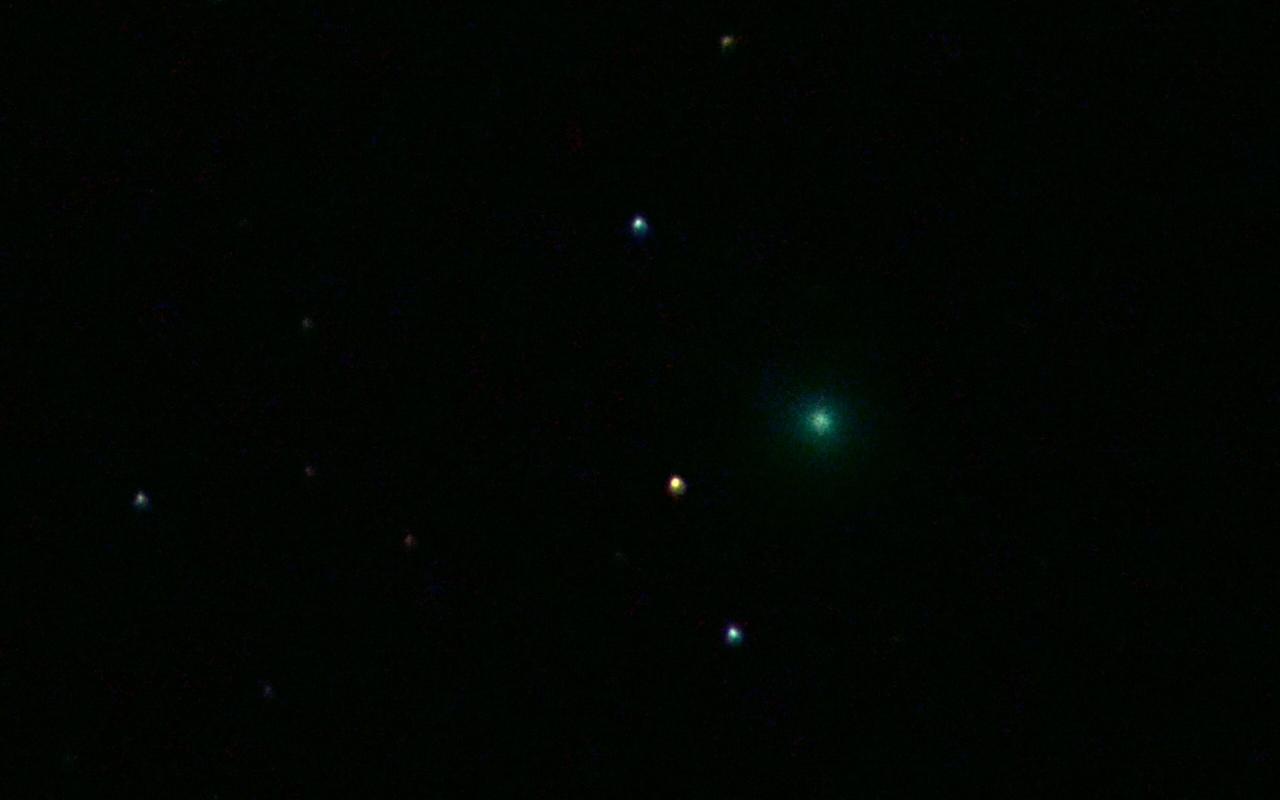Hunting Lovejoy, Part III
It was a clear night after all and so I took some more picturs of the sky. Here is what I got:
Here we have Lovejoy again. This time I combined four separate images into one and reduced the background noise a bit. Still no tail, though. In the middle we have Jupiter, again, this time with only three moons visible. Two of them are very close to Jupiter itself. The last image is of Sirius. Not that spectacular, but a nice image I think.
Next we have two very long exposed images just to get a feeling for how many stars there are not visible to the naked eye. This time I took equipment to the countryside - if you can call a two kilometre car ride that - but as you can see there is still some mist in the atmosphere that gets illuminated by the surrounding cities. On the first image, by the way, there are the Plejades in the centre and the bright star to the left is Aldebaran. The second image is of Ursa Major.
These five images are of Orion. It is really prominent in the winter sky so it makes for a good motive. In the first image there is Betelgeuse at the bottom left as well as the "head" - Lambda Orionis - and the "right shoulder" - Gamma Orionis. These stars are the top half of the mythical hunter, while the lower half is visible in the second image: Orions Belt and the two "feet" - Kappa Orions to the left and Rigel to the right. The third picture features the three belt stars, while the fourth and fifth show the stars around the Orion Nebula.
There were many more stars visible that I wanted to photograph, but sadly at this point my tripod broke, I guess the cold was too much for the tilt locking mechanism. There is a little metal ring that acts as a bracket around the tilt axis which splintered into five parts. I guess that's it for this tripod, I probably won't be able to find a replacement part for something like that any time soon.
Here we have Lovejoy again. This time I combined four separate images into one and reduced the background noise a bit. Still no tail, though. In the middle we have Jupiter, again, this time with only three moons visible. Two of them are very close to Jupiter itself. The last image is of Sirius. Not that spectacular, but a nice image I think.
Next we have two very long exposed images just to get a feeling for how many stars there are not visible to the naked eye. This time I took equipment to the countryside - if you can call a two kilometre car ride that - but as you can see there is still some mist in the atmosphere that gets illuminated by the surrounding cities. On the first image, by the way, there are the Plejades in the centre and the bright star to the left is Aldebaran. The second image is of Ursa Major.
These five images are of Orion. It is really prominent in the winter sky so it makes for a good motive. In the first image there is Betelgeuse at the bottom left as well as the "head" - Lambda Orionis - and the "right shoulder" - Gamma Orionis. These stars are the top half of the mythical hunter, while the lower half is visible in the second image: Orions Belt and the two "feet" - Kappa Orions to the left and Rigel to the right. The third picture features the three belt stars, while the fourth and fifth show the stars around the Orion Nebula.
There were many more stars visible that I wanted to photograph, but sadly at this point my tripod broke, I guess the cold was too much for the tilt locking mechanism. There is a little metal ring that acts as a bracket around the tilt axis which splintered into five parts. I guess that's it for this tripod, I probably won't be able to find a replacement part for something like that any time soon.
